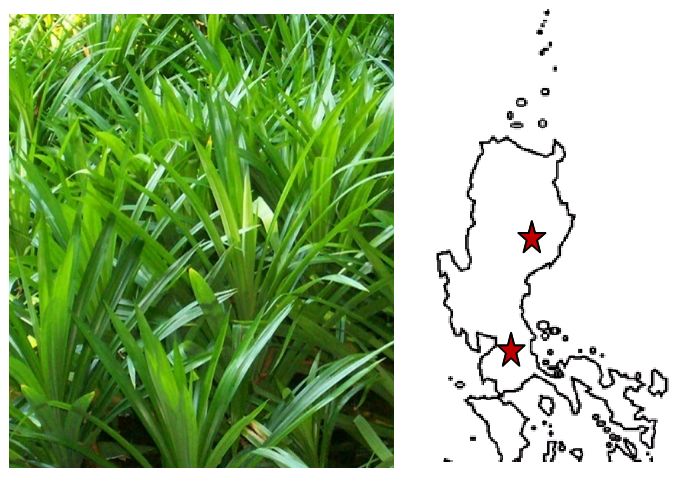VOLUME 6 NUMBER 2 (July to December 2013)

Philipp. Sci. Lett. 2013 6 (2) 128-137
available online: June 21, 2013
*Corresponding author
Email Address: fei_jan14@yahoo.com
Submitted :February 9, 2013
Revised: June 3, 2013
Accepted: June 5, 2013
ARTICLE
Antimicrobial and AntioxidantActivities of Fungal Leaf EndophytesAssociated with Pandanusamaryllifolius Roxb.
by Melfei E. Bungihan1,6*, Maribel G. Nonato1,2,3, Siegfried Draeger4+, ScottFranzblau5 and Thomas Edison E. dela Cruz1,2,3
1 Graduate School,
2 College of Science and
3 Research Center for the Natural and Applied Sciences, University of Santo Tomas, España 1015 Manila, Philippines
4 Institute of Microbiology, University of Braunschweig, Spielmannstraße 7, D-38106 Braunschweig,Germany
5 Institute of Tuberculosis Research, College of Pharmacy, University of Illinois at Chicago, Chicago,Illinois 60612-7231, USA
6 Center for the Natural Sciences, Saint Mary's University, Bayombong, 3700 Nueva Vizcaya, Philippines
2 College of Science and
3 Research Center for the Natural and Applied Sciences, University of Santo Tomas, España 1015 Manila, Philippines
4 Institute of Microbiology, University of Braunschweig, Spielmannstraße 7, D-38106 Braunschweig,Germany
5 Institute of Tuberculosis Research, College of Pharmacy, University of Illinois at Chicago, Chicago,Illinois 60612-7231, USA
6 Center for the Natural Sciences, Saint Mary's University, Bayombong, 3700 Nueva Vizcaya, Philippines
Fungal endophytes are potential sources of novel andbioactive natural products. Our research study aimedto isolate, identify, and evaluate biological activitiesof endophytic fungi associated with the leaves ofPandanus amaryllifolius. Fungi were isolated aftersurface-sterilization of mature leaves of P. amaryllifoliuscollected from Nueva Vizcaya and Manila, Philippines. Twenty eight (28) morphospecies were isolated and identified as speciesbelonging to the genera Colletotrichum, Chaetomium,Diaporthe, Glomerella, Guignardia, Lasiodiplodia, Lulworthia,Phoma, Phyllosticta, Trichoderma, and Truncatella. Selectedfungal isolates were cultured in Potato Dextrose Broth for 3weeks for the production of secondary metabolites. Extractionwith ethyl acetate produced crude culture extracts which wereobserved to contain phenolics and sterols when subjected to thinlayer chromatography. Bioassay of the crude extracts showedantimicrobial activities against Mycobacterium tuberculosisH37Rv using the Microplate Alamar Blue Assay method andagainst Staphylococcus aureus, Eschericia coli, and Gordoniaterrae using the paper disk diffusion method. Crude cultureextracts of Colletotrichum spp., Glomerella sp., andChaetomium sp. showed the highest inhibitory activities againstthe test bacteria. Antioxidant activity using 1,1-diphenyl-2-picrylhydrazyl(DPPH) assay also showed radical scavengingactivity (16-37%) of the phenolic compounds from the crudeculture extracts.
© 2025 SciEnggJ
Philippine-American Academy of Science and Engineering